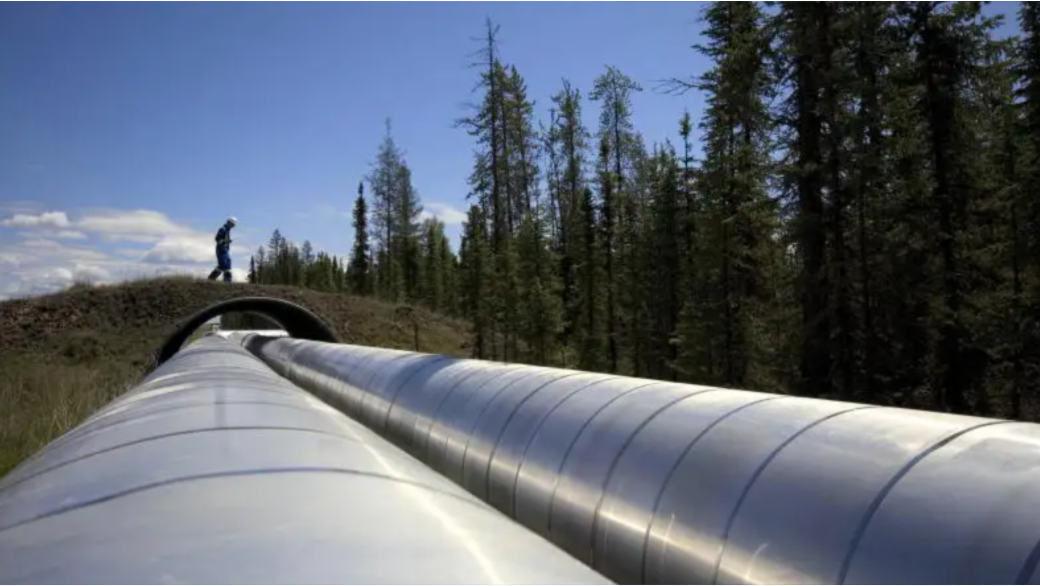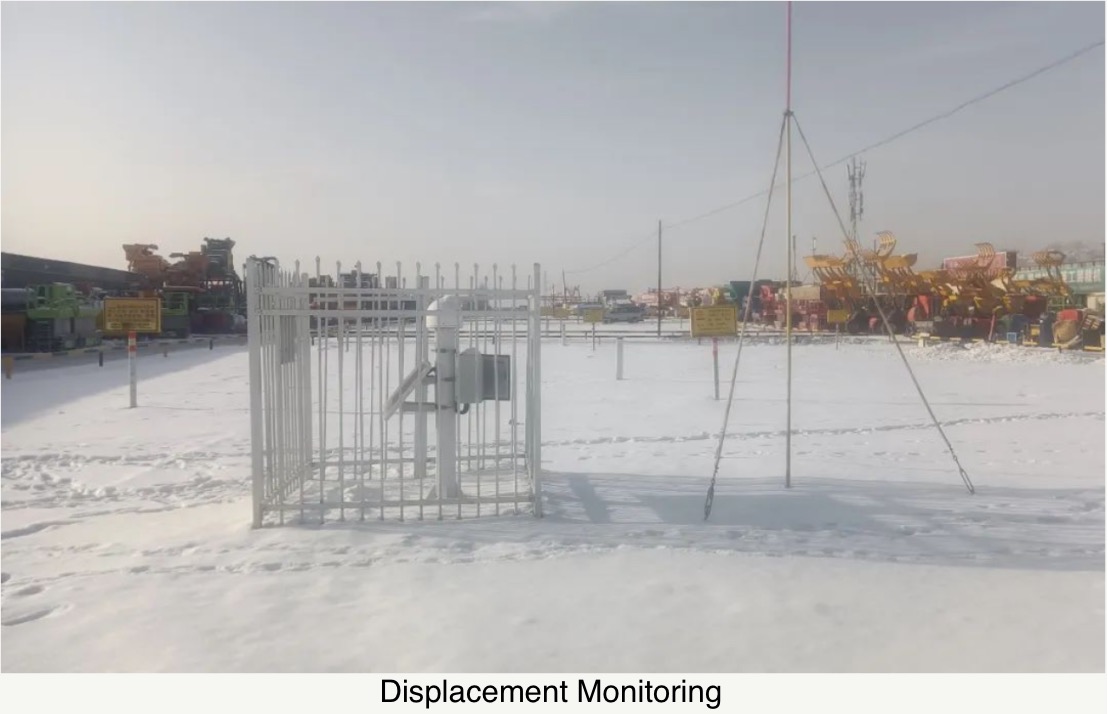Case Studies
Case Studies
- Construction of A New Organic-inorganic Composite Emulsion and Its Enhanced Mechanical Properties of Oil Well Cement(Part 1)
- Construction of A New Organic-inorganic Composite Emulsion and Its Enhanced Mechanical Properties of Oil Well Cement(Part 2)
- The Application Prospects of DeepSeek Large Model in Petroleum Engineering(Part 1)
- The Application Prospects of DeepSeek Large Model in Petroleum Engineering(Part 2)
- Development and Performance Evaluation of Efficient Asphalt Dispersant (Part 1)
- Development and Performance Evaluation of Efficient Asphalt Dispersant (Part 2)
- Development and Performance Evaluation of Efficient Asphalt Dispersant (Part 3)
- Research and Application Status of Drilling Fluid Plugging Materials (Part 1)
- Research and Application Status of Drilling Fluid Plugging Materials (Part 2)
- Research and Application Status of Drilling Fluid Plugging Materials (Part 3)

While driving the economic and social development along the pipeline, oil pipeline enterprises are also facing the challenges of increasing the number of pipeline sections in high consequence areas, accumulating safety risks, and challenging hidden danger rectification tasks. How to take effective measures to enhance the intrinsic safety of pipelines, manage inventory, control increment, and prevent pipeline failure accidents in high consequence areas, in order to ensure energy transportation and public safety, is a major task facing pipeline enterprises.
High Consequence Area (HCA) refers to an area where a pipeline leak may cause significant adverse effects on the public and the environment. The geographical distribution and scope of these areas will vary over time and environmental changes. High consequence areas can be classified into three levels based on their severity: Level I represents the least significant impact, Level II represents moderate impact, and Level III represents the greatest impact.
The identification and management of high consequence areas is an important task for pipeline operation enterprises, as they directly relate to the safe operation of pipelines and social stability. In order to ensure the safety of high-risk areas, pipeline enterprises need to regularly identify and update high-risk areas, as well as conduct risk assessments and necessary safety protection measures for high-risk areas. In addition, it is necessary to strengthen the management and training of personnel near high consequence areas in order to respond quickly and effectively in emergency situations.
High consequence areas may include densely populated areas and environmentally sensitive areas, such as rivers, lakes, nature reserves, etc. In these areas, pipeline leaks may lead to serious public safety and environmental damage. Therefore, pipeline companies should deploy more monitoring equipment and technical means around these areas to reduce the risk of leaks and respond quickly to any events.
Urumqi Oil and Gas Branch has 11 types of pipelines under its jurisdiction, with a total length of 1851km. 127 sections of high consequence areas, totaling 242km, account for 13.09% of the total length of the pipelines under its jurisdiction. There are 61 sections with a total length of 91km in densely populated high consequence areas, and 38 sections with a total length of 141km in environmentally sensitive high consequence areas. Through risk assessment of high consequence areas in pipelines, it was found that there are some problems in the management of high consequence areas, such as insufficient monitoring of geological conditions, protective targets, third-party activities, and other factors around the pipelines; Insufficient safety distance between pipelines and surrounding facilities; The structure and function of the pipeline body or ancillary facilities are missing. The discovery of these problems in daily management currently mainly relies on manual inspections, which not only consume a lot of human resources, but also have long inspection cycles and limited frequency, making it difficult to achieve 24-hour uninterrupted monitoring. Potential risk events are often difficult to detect and control in a timely manner. Once an event occurs, it is usually necessary to search for violators through means such as visits and video replays, which is not only time-consuming and labor-intensive, but also difficult to trace, posing a challenge to the safety management of high consequence areas.
In view of the above problems, Urumqi Oil and Gas Branch, in combination with the actual situation along the pipeline, made in-depth analysis of the goal of "managing the stock and controlling the increment" in the pipeline high consequence areas, explored and promoted the new technology of integrated pipeline patrol based on the Internet+AI artificial intelligence+UAV+new business type, and built a multi-dimensional patrol system of video monitoring+optical fiber+UAV patrol+manual patrol.

One is to promote the application of intelligent video surveillance technology. Implement all-weather, real-time, and efficient monitoring of potential hazards such as third-party construction, heavy vehicle crushing, illegal occupation, insufficient safety distance, geological disasters, and corrosion and leakage in high consequence areas. Send personnel to the site to investigate and handle them in a timely manner, eliminate hidden dangers in their early stages, and achieve full process control of "before, during, and after".
The second is to improve the quality of manual inspection. The line patrol workers wear inspection terminals to automatically and accurately capture their GPS coordinate information, and draw a complete inspection trajectory on the map. Once the inspection range is exceeded or the inspection task is not completed as planned, the system will immediately trigger an alarm, thereby improving the accuracy and quality of manual inspection.
The third is to carry out inspections of drone nests. Using drones for fully automatic patrols and intelligent alarms, setting up drone nests to enhance drone endurance, and supplementing blank time periods for manual inspections. When abnormal situations are detected, the system will use AI technology to analyze and issue intelligent alarms. Management personnel can view and process alarm information at any time through computers or mobile phones.
The fourth is the linkage between fiber optic vibration warning and video. Connect the fiber optic vibration system warning data and combine it with the video monitoring system. Once the fiber optic system detects abnormal vibration, the monitoring system will immediately call the cameras around the warning point pipeline and automatically locate them to capture real-time images and recorded videos at the warning point. The captured images will be intelligently analyzed to generate linkage warning information.
The fifth is the linkage between laser methane warning and video. Connect the laser methane monitoring camera and preset the alarm value. When the methane concentration exceeds the safety threshold, the system immediately sends an alarm message and calls the corresponding camera for on-site video viewing, capturing, and recording of abnormal situations. It can quickly identify and locate the source of leakage, and take necessary response measures in a timely manner.
By implementing the above policies, the phenomenon of arbitrary and barbaric construction in high consequence areas has been effectively curbed, and third-party construction has achieved real-time monitoring, eliminating the occurrence of drilling and oil theft incidents, effectively ensuring the safe operation of pipelines in high consequence areas.



